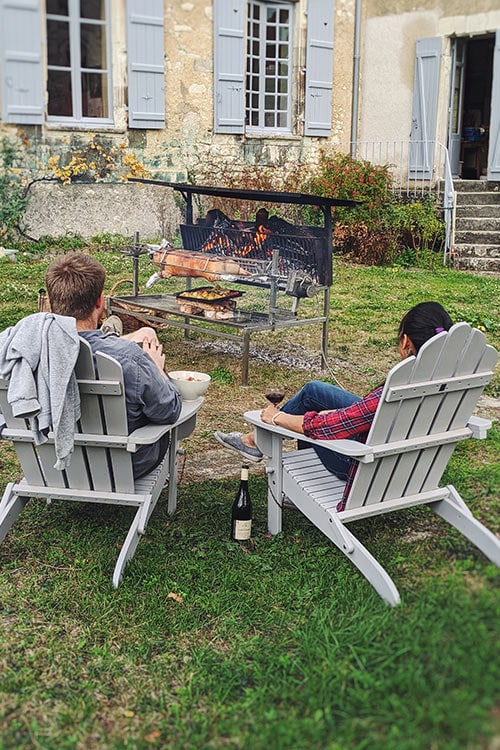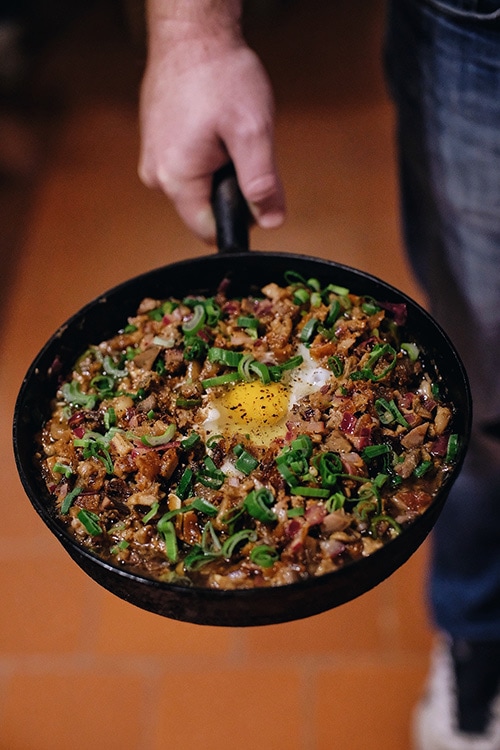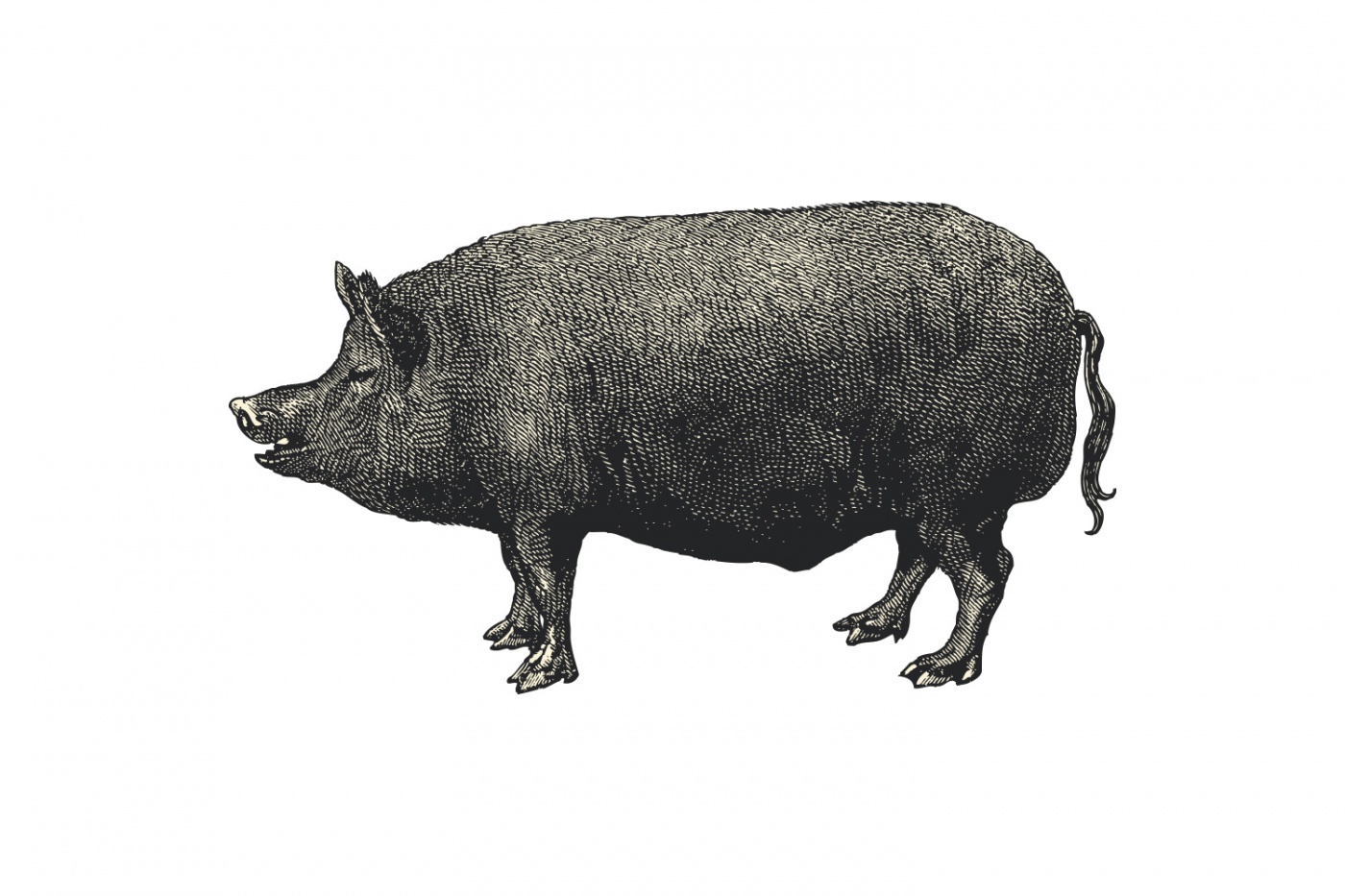My Tale of Eating a Pig From Nose to Tail
“Why are we eating pork again?” sulks the young one. I’m conjuring stereotypical answers in my head like there are children in Africa starving and you’re complaining about eating too much meat? But I hold my tongue for fear of sounding like a “tiger mum.” The truth is, I did not want him to to be one of those kids that sketches lifeless shrink-wrapped drumsticks from the supermarket when tasked to draw a chicken. There, I said it, and he forks through the rest of his pig’s head stew, a little less reluctantly. One can only hope. In fact, I would be so proud if he could master drawing a butcher’s diagram of a pig and identify where the loin is.
Economies of scale and increasing demand have streamlined our supermarket shelf selection over the past decades. It’s always chicken breast and thighs, ribs and sirloin, pork belly and shoulder, and minced meat in all forms for quick stir-fries and last-minute meals. In France, I’ve despaired over the variety of meats at the grocery store—mostly over the nonexistent chicken wings (I miss eating buffalo wings). Furthermore, since France’s beef production accounts for 34 per cent of all bovine livestock raised in Europe, you know where their priorities lie.
So far, I’ve succumbed to eating langue de bœuf (beef tongue), ris de veau (calf’s pancreas), tête de veau (veal head) and even the museau de bœuf (cow’s nose). The key is not to be squeamish about it. You’ll be mistaken if you think the French do not have age-old tricks up their sleeves to make nose-to-tail dining delicious. I scarfed down thin slices of cow’s nose bathed in sort of a light vinegar sauce, punctuated with cornichon pickles that provided a satisfying hint of acidity before declaring it scrumptious, much to my host’s family’s delight.
We were first introduced to ‘George’ who came to us with all four limbs tied squarely with metal twine to a rigid frame. He was insentient, evident by a small puncture at the nape of his neck. His hollow frame revealed gut-wrenching truths: all the offals and insides had been cleaned out, courtesy of the slaughterhouse. I gave his taut tush a spank and tried hunting for an apple small enough to fit into his trap, but to no avail. You see, George is or was a suckling pig from Maison Galland—a three-generation pig farming business in the Loire Valley. Now he was awaiting an oil rubdown.

We kicked off the day-long proceedings at 8am that morning. Setting up an elaborate metal hut for the piggy and building a huge fire, which provided much warmth in the form of glowing embers. Shortly, we opened ice-cold ales before moving on to ruby hues of Chinon that we lapped down with bowls of warm caramel popcorn. The game plan was low and slow. We wrapped George’s ears and trotters in aluminium foil and basted him in confit garlic and rosemary-infused oil every 40 minutes.
After about two hours, our eyes itching from the smoky assaults, the potatoes and carrots on a drip tray below were getting coated with the best ‘dressing’—thanks to the outpourings from George who was looking more gloriously golden by the second.
Just when the sun had set in an explosion of turquoise and orange hues beneath the horizon, we pulled George out of his misery. The family gathered around with flutes of bubbly champagne to bid their farewells, before digging into the perfect roast. The ribs were the first to go, then the pork crackling.
But what do we do with the rest of the pig?
What was intended to be a show stopper for 20 people became an excessive dinner for five. Thanks, Covid-19. We took apart the shoulders and the leg ham and bagged it into various portions for quesadillas, cubanos and stir-fry concotions. Then we poured all evidence of our debauchery into a stockpot topped it up with gallons of water and a slight touch of vinegar to extract the collagen. After a little sieving action, aromats were introduced into the picture. Eventually, you get soup, a shimmery puddle that forms the base for bamboo shoots, ajitsuke tamago, scallions and blanched ramen noodles.

The trotters were consumed in one afternoon. (The kid was not a happy camper.) My other half stewed it with a touch of tomato and deglazed it with red wine. Once it was ready, we drenched the rice with gravy and chomped on the hooves.

We had sisig that night, a Filipino dish that is made up pig’s head and seasoned with calamansi. Unctuous and crispy in all the right places, and more importantly laced with homemade mayonnaise and the family’s secret stash of Maggi seasoning, I worked my way through the ears, cheeks, tongue and face in a breeze.
Frozen and stashed away, it was comforting knowing that 3kg of ham and pork shoulder are ready for use, whenever. As for the off-cuts, I was game to work with tripe and liver. In the past, consuming the entire pig may be an ancient practice steered by frugality and nutrition, but in this day and age, it’s all about reducing your carbon footprint and respecting food more. After all, the whole is greater than the sum of its parts.


